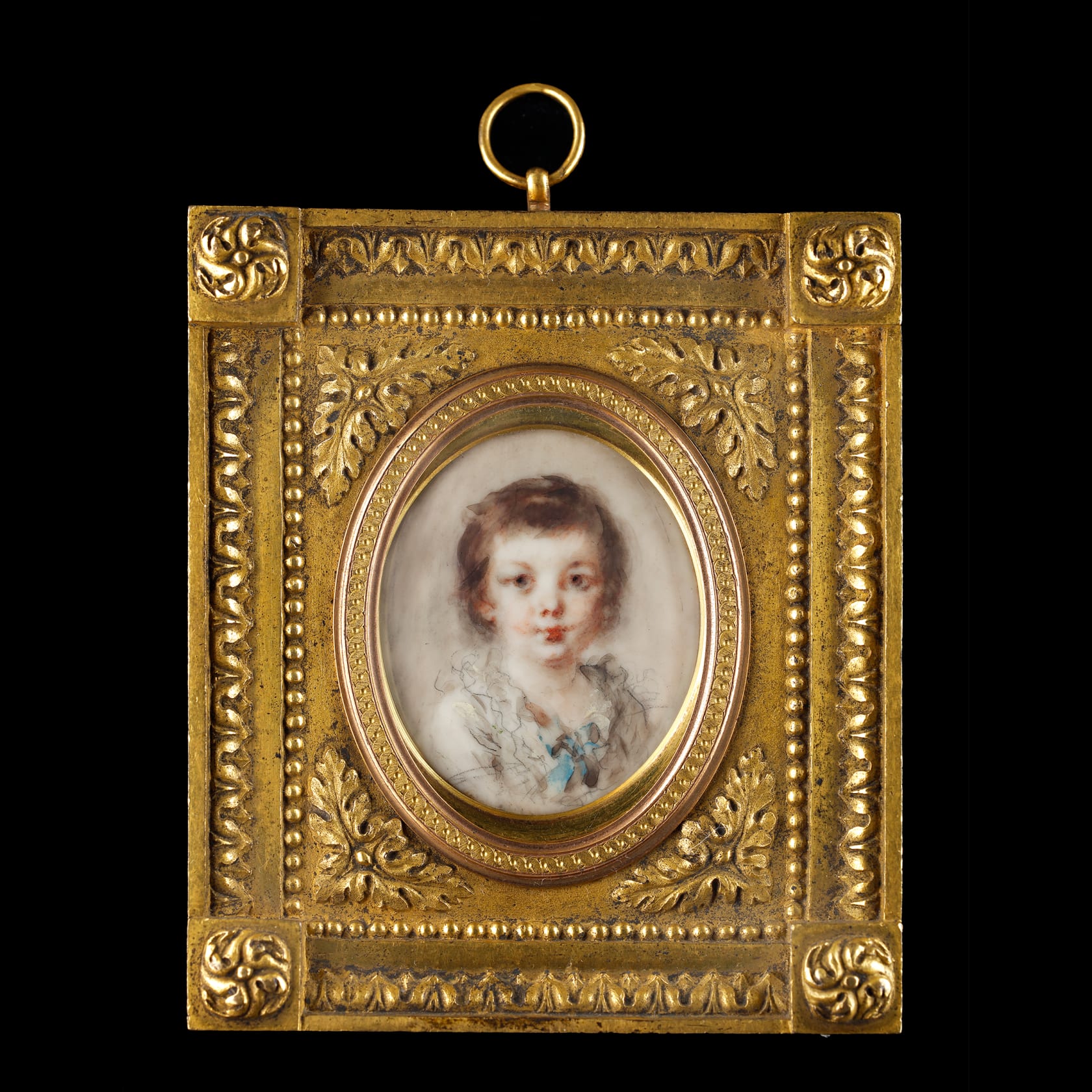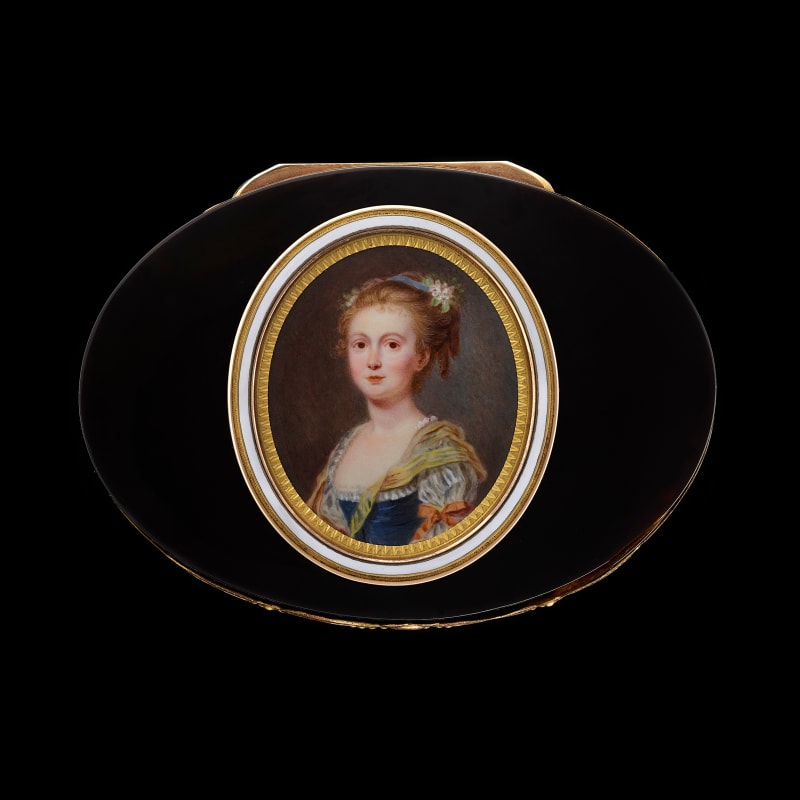
Marie-Anne Fragonard
(1745-1823) Portrait of Jean Henri, Vicomte de Lage de Volude (1767-1795), when a child, circa 1770Provenance
D. David Weill;
Sotheby’s, London, 17th March 1986, lot no. 66.
Literature
L. Gillet, C. Jeannerat and H. Clouzot, Miniatures and enamels from the D. David Weill Collection (Paris, 1957), no. 55 (as Jean-Honoré Fragonard), pp. 108-109, illustrated;
P. Rosenberg, ‘De qui sont les miniatures de Fragonard’, Revue de l’Art, vol. 111, 1996, pp 74-76.
For long, Marie-Anne Fragonard was a victim of a male-focused approach to art history. Almost invariably, miniatures by Fragonard were once assigned to her more famous husband, Jean-Honoré (1732-1806), one of the most important artists of the French Rococo. It was only in 1996 that Pierre Rosenberg first proposed that they were in fact the work of Marie-Anne Fragonard.[1] The result has been the rectification of a great injustice. As is evidenced by the present work, Marie-Anne Fragonard was an artist of no little talent. Her touch is light and painterly, creating likenesses of great presence and character with a dazzling economy of means.
Fragonard’s technique is particularly well-suited for the depiction of children. In this portrait we see Jean Henri, Vicomte de Lage de Volude, the second son of François-Paul, Marquis de Lage de Volude, Seigneur du Tirac d'Asnière (1734-1793) and his wife Marie-Jeanne de Kergariou. Although the Vicomte did not live long – he died before he...
For long, Marie-Anne Fragonard was a victim of a male-focused approach to art history. Almost invariably, miniatures by Fragonard were once assigned to her more famous husband, Jean-Honoré (1732-1806), one of the most important artists of the French Rococo. It was only in 1996 that Pierre Rosenberg first proposed that they were in fact the work of Marie-Anne Fragonard.[1] The result has been the rectification of a great injustice. As is evidenced by the present work, Marie-Anne Fragonard was an artist of no little talent. Her touch is light and painterly, creating likenesses of great presence and character with a dazzling economy of means.
Fragonard’s technique is particularly well-suited for the depiction of children. In this portrait we see Jean Henri, Vicomte de Lage de Volude, the second son of François-Paul, Marquis de Lage de Volude, Seigneur du Tirac d'Asnière (1734-1793) and his wife Marie-Jeanne de Kergariou. Although the Vicomte did not live long – he died before he had reached his thirtieth birthday – he would in his brief life have witnessed the total transformation of the status of the aristocracy in France, brought on by the French Revolution. Indeed, this was to be the undoing of the Vicomte himself. Having embarked on a career in the navy in 1781, rising in 1789 to the rank of a ship’s lieutenant in 1789, de Lage de Volude found himself appalled by the outbreak of revolutionary insurrection. He soon became a committed defender of the Royalist cause and, in 1795, attempted to land a royalist army at Quiberon on the French coast. The attempt ended in disaster, however, and the capture of the Vicomte. Sentenced to death by firing squad, he was yet another victim of the bloodiest years of the French Revolution.[2] A time of violence which seems far removed from this portrait of childhood innocence.
Ivory Act:
This artwork has been registered by Philip Mould and Company as qualifying as exempt from the ivory act. Please contact laura@philipmould.com if you have any further queries.
Ivory Registration: LV2A3Y91
[1] P. Rosenberg, ‘De qui sont les miniatures de Fragonard’, Revue de l’Art, vol. 111, 1996, pp. 66-76.
[2] P. Hicks, F. Houdecek, T. Lentz, C. Prévot (eds.), Emmanuel de Lases Cases: Le Mémorial de Sainte-Hélène: Le manuscript retrouvé (Paris, 2017). View online here


